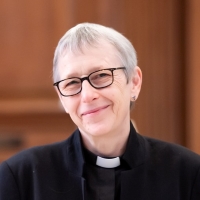For those of us who work here at St Bride’s all the time, particularly during the winter months, there is a standing joke that, if you think the Holy Trinity is an unfathomable mystery, you have not yet encountered the profoundly baffling conundrum that is the St Bride’s heating system – the complexities of which have perplexed and beguiled the most eminent practitioners in the field of heating engineering for generations.
Indeed, I am frequently startled to encounter one of our heating consultants, the lovely Ed, lurking unseen in one of the hidden corners of our crypt or in the downstairs boiler room, contemplating some aspect or other of how ‘thermostat speaks unto heating control’, which he invariably does with an air of true philosophical wonderment. You will doubtless understand why we now refer to Ed as our ‘Boiler Whisperer’.
Why is our heating system so baffling? Because over the years, new bits have been bolted onto old bits; valves have worn out, or sheered off, or ceased to function. Nobody has a clue how, or when, my study here acquired underfloor heating (given that it is an eighteenth-century burial chamber), and the whole gigantic boiler-driven beast really does appear to have a life of its own, largely independent of any human control. We are grateful for the marvellous warmth that it still manages to provide, most of the time… but I, at least, remain in terrified awe of its power.
By comparison, the little matter of the doctrine of the Holy Trinity can seem remarkably straightforward. Which is perhaps unsurprising, given that every year on Trinity Sunday, I remind myself of the very important observation made by the seventeenth century priest and poet John Donne that, properly understood, the doctrine of the Trinity is there to make the concept of God more accessible, rather than more difficult. Because what it does is to give an account of the different ways in which human beings have experienced God, and finds a way of trying to hold them together.
Hence we encounter God the Creator, almighty and powerful; God the Son, who understands us better than we do ourselves, because he came to us as one of us; and God the Holy Spirit, the power of God at work in the world. All are God, and yet all are distinct.
Any language or imagery that we attempt to use of God will of course fall short. Mere human language can never hope to contain the full reality of that which is ultimately beyond words and beyond human comprehension. As one of our most famous and well-loved hymns puts it: ‘Immortal, invisible, God only wise, in light inaccessible hid from our eyes.’ But that does not mean that we cannot encounter the reality of God at all – far from it. We do so in many and various ways, as human beings before us have done over many, many centuries.
But returning to the Trinity for a moment, what exactly is all that stuff about ‘one God in three persons’ all about? St Augustine had a reasonable crack at an explanation when, in his work entitled On the Trinity, he used the analogy of water in its various forms. Imagine the Father, the Son and the Holy Spirit, as ice, water and steam – all made of the same basic substance. The Father is not the Son or the Holy Spirit (just as water and steam are not ice); and the Son is not the Holy Spirit or the Father (just as water is not ice or steam); and the Holy Spirit is not the Father or the Son (just as steam is not ice or water). But nevertheless they are all made of the same substance – H2O. It is actually quite a clever analogy when you think about it – but like any attempt to define and contain what is divine within the constraints of the merely human, it inevitably, of course, falls short.
A couple of days ago, I was reading about St Columbanus, an Irish missionary, born around the year AD540 – which makes him a near contemporary of our own Irish patron saint here, St Brigid of Kildare. Columbanus had a profound sense of the natural world as God’s gift, describing it as a second revelation, which was to be ‘read’ alongside scripture, as a way of deepening our knowledge of God. He wrote this:
Seek no further concerning God; for those who wish to know the great deep must first review the natural world. For knowledge of the Trinity is properly likened to the depths of the sea, according to that saying of the Sage, ‘and the great deep, who shall find it out?’ If, then, a man wishes to know the deepest ocean of divine understanding, let him first, if he is able, scan that visible sea, and the less he finds himself to understand of those creatures which lurk beneath the waves, the more let him realise that he can know less of the depths of its Creator.’
So Columbanus likens the unfathomable nature of God, to that of the ocean. And alongside the analogy I have already used, there is something really important here, too. Because in relation to God, too, the more you discover, the more you come to realise how little you truly know. In that way, through contemplating the breathtaking wonder of creation we are helped to glimpse the true mystery of God.
Our Gospel reading from John’s Gospel reminds us that the Spirit of truth leads us into all the truth … but note the active, dynamic word ‘leads’. If the Spirit leads, then in order to find the truth, the implication is that we must follow. That discovery of truth involves movement and change; it involves new understanding; setting aside old ways of looking in order to see afresh and with renewed vision.
A God who was simply an all-powerful and almighty Creator, might exact obedience, but would be difficult to relate to, and surely impossible truly to love. Which is why we also need God the Son: because in the Son we discern the Father, as God is Christ-like, and in him we glimpse the full nature and extent of God’s love for us in a way that is truly meaningful. Hence those who have seen the Son have seen the Father. And alongside the Father and the Son we find ourselves reaching for the language of the Spirit, active in the world around us, inspiring us, directing us, perplexing us, consoling us, re-creating us.
Father, Son and Holy Spirit. One God in three persons. But all part of a mystery as unfathomable as our human contemplation of the ocean; of the starlit sky that goes on for ever; of the delicate wonder in a hazelnut shell. A God who is unfathomable, yet intimate; who is far above all else, yet so close to us that sometimes we are startled to discover his presence surrounding us. A God who is timeless and changeless, yet burns in our hearts like fire. A God who is creator, redeemer and sustainer. A God whose love and grace and forgiveness are always there for us.
And thanks be to God for that. Amen.



